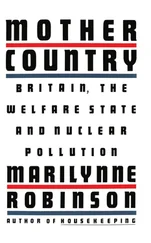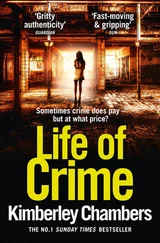Housing was then part of the Ministry of Health, so the task of providing the houses fell to Bevan, on top of the massive task of founding the NHS. Given the impact poor housing can have on health, there was an intellectual logic to this. After it was removed by Attlee and put in with local government in 1951, repeated arguments would be heard down the decades for reuniting the two. But, given the scale of the health and housing challenges in 1945, Attlee’s failure to split the department earlier, or at least coordinate the housing programme more effectively, is widely seen as his greatest administrative error. 13Bevan had to work not only with Dalton, who as Chancellor had to find the cash, but with the Ministry of Works which directed the building industry, licensed private builders (who were subject to controls) and controlled building materials. The Ministry of Supply, however, also had its fingers in the materials pie, of which there were far too few slices to go round. Steel, wood and almost everything else ran desperately short, while Britain had few currency reserves with which to pay for imports after the war. The Board of Trade was thus at times involved, while the Ministry of Labour, in 1945, still had powers to control and direct manpower. In addition, the Ministry of Town and Country Planning could refuse sites for housing or anything else. Scotland was run separately. Picture Post at one point calculated that there were ten ministerial cooks attempting to make the broth. 14
Bevan’s chief agents for house building were the local authorities – all 1700 of them, ranging from the London County Council, with a long and fine tradition of public housing, to tiny authorities that had hardly ever built a thing.
None of this was a recipe for rapid progress. Bevan did himself less than justice by jibing years later that while at health he spent only five minutes a week on housing, 15when at times the doctors complained that he spent too much time on housing and not enough on them. 16He inherited plenty of figures from the coalition government, but little by way of a plan. Lord Portal, the Minister of Works, had promised half a million of the pre-fabs, compact pre-fabricated bungalows, which from 1944 had started appearing on bomb sites. Steel for their frames could not be spared, however. Aluminium and concrete alternatives were designed, aircraft factories were turned over to their production, and although 125,000 were erected by 1948 they cost two-thirds more than the original estimate. Bevan hated them, describing them as ‘rabbit hutches’, although they proved in practice cosy and surprisingly popular. Isolated examples still existed in the 1990s, despite their ten-year life expectancy, 17with some even being proposed for preservation orders.
Housing was to prove much less of a policy departure from pre-war days than health, education or social security. It was chiefly the emphasis that Bevan changed. The degree to which he did so, however, and the failure to build large numbers of new homes quickly was to cause controversy.
The two decades before the Second World War, despite the bitter disappointment over ‘homes fit for heroes’ had in fact seen the biggest output of new houses in Britain’s history. 18Local authority house building, whose origins stretched back to Victorian times, had become well established. Slum clearance had begun. Even so, council houses in 1939 accounted for only about one in eight of the stock. Three-quarters of the new homes between the wars had been privately built, the bulk of these for purchase rather than rent. In addition, growing numbers of tenants had bought their homes from their landlords. As a result the slow beginnings of the decline in the private rented sector, and what was to become a dramatic shift to owner-occupation, were already under way. The number of owner-occupiers had more than quadrupled between 1918 and 1938, even if that increase still left only just over a quarter of housing in owner-occupation, against 60 per cent privately rented and 13 per cent in council ownership. 19
Bevan spectacularly reversed the balance between private and public in house building, while resisting the creation of some sort of nationalised National Housing Corporation to build the homes – a course urged by Morrison, Douglas Jay, who was Attlee’s economic adviser, and by Lord Addison, who had had his own troubles with local authorities as Lloyd George’s health and housing minister. 20Bevan’s policy was to restrict severely private house-building, allowing only one private house for every four built by local authorities, to order local authorities to requisition empty houses and derequisition those it had taken over as offices, to toughen rent controls, put first priority on repairs to unoccupied war-damaged dwellings, and charge local authorities with the task of building, either through direct labour organisations or on contract with private builders. He persuaded Dalton not only to treble the subsidy for council housing and extend it from forty to sixty years, but to shift the balance so that three-quarters of the cost rather than two-thirds came from the Exchequer, and only a quarter from the rates.
This last provided the cash. Sir John Wrigley, the senior civil servant who was sceptical such a case could be won, recalled receiving a ‘sharp, almost supercilious refusal’ when he first put it to the Treasury. ‘Bevan thereafter must have had private talks with Dalton,’ Foot records. ‘Sir John was advised to reopen the question with all the blandness he could muster. “My minister,” he said at the next meeting of the committee, “still thinks that the figure of three to one would be appropriate.” “And my minister agrees,” the Treasury official replied.’ 21
The continued restrictions on private house-building, Bevan’s strictures on the unreliability of the ‘speculative private builder’, and the big expansion planned for council housing outraged the Tories, who took advantage of the pitifully slow progress in the early months to pillory Bevan. Churchill accused him of ‘chilling and checking free-enterprise house building which had always provided the bulk of the nation’s houses’. Bevan, he charged, was guilty of ‘partisan spite’ in refusing to enlist ‘all house building agencies of every kind’. 22In fact private builders got the bulk of the work. But they were building homes for rent for local authorities, not homes for sale to those who could afford to buy in the private sector.
Outside Parliament, the situation briefly looked frightening. ‘In the summer of 1946 it was possible for a family to find itself 4,000th on the local council’s waiting list. Some were ex-servicemen with young children who could not even find lodgings, because the landlord had a no children rule,’ Alan Jenkins relates.
Agitators took over, organizing mass meetings in Leicester Square, and ‘vigilantes’ went about cities looking for apparently vacant buildings, even if they had ‘sold’ [or ‘requisitioned’] notices outside … An empty Nissen hut at an airport could house two families, so if there was no one looking, you moved in. Landlords might cut off the water, gas, electricity; but in desperation you could use candles and spirit stoves. The climax was reached in the ‘Great Sunday Squat’ of September 1946 at Duchess of Bedford House, an empty block of flats in Kensington. Like so much Communist organisation, it was orderly, efficient and quiet. Elsewhere in the country, squatters occupied abandoned Army camps [more than 46,000 ended up in them]. They were not evicted because the Government suddenly realized that this was really rather a good idea which they ought to have thought of themselves. 23
The real problem was less the tool Bevan used to do the job – the local authorities – than the lack of the most crucial tools of all: manpower and materials. At one Cabinet meeting, Bevan exploded: ‘Where are all the people I need for my programme?’ Attlee drily replied: ‘Looking for houses, Nye!’ 24
Читать дальше
![Nicholas Timmins The Five Giants [New Edition]: A Biography of the Welfare State обложка книги](/books/701739/nicholas-timmins-the-five-giants-new-edition-a-cover.webp)











